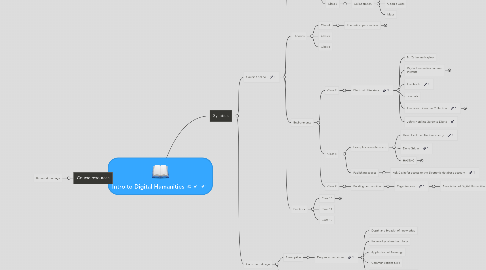
1. Course resources
1.1. Required readings
2. Syllabus
2.1. Course Outline
2.1.1. Fundamentals
2.1.1.1. Class 1
2.1.1.1.1. Definitions
2.1.1.2. Class 2
2.1.1.2.1. Digitized
2.1.1.2.2. Born digital
2.1.1.3. Class 3
2.1.1.3.1. Collaboration
2.1.2. Theories
2.1.2.1. Class 4
2.1.2.1.1. Theoretical perspectives
2.1.2.2. Class 5
2.1.2.3. Class 6
2.1.3. Environments
2.1.3.1. Class 7
2.1.3.1.1. Electronic Literature
2.1.3.2. Class 8
2.1.3.2.1. Examples from elsewhere
2.1.3.2.2. Publishing spaces
2.1.3.3. Class 9
2.1.3.3.1. Building communities
2.1.4. Practices
2.1.4.1. Class 10
2.1.4.1.1. Why Study Digital Humanities
2.1.4.2. Class 11
2.1.4.3. Class 12
2.2. Curriculum design
2.2.1. Prescriptive
2.2.1.1. Degree expectations
2.2.1.1.1. Depth and breadth of Knowledge
2.2.1.1.2. Knowledge of methodology
2.2.1.1.3. Application of Knowlege
2.2.1.1.4. Communications Skills
2.2.1.1.5. Awareness of Limits of Knowledge
2.2.1.1.6. Autonomy and Professional Capacity
2.2.2. Emergent
2.2.2.1. Connectivism
2.2.2.1.1. cMOOC
2.2.2.1.2. Personal Learning Environments
2.2.2.2. Intro to Digital Humanities as a MOOC
2.2.2.2.1. Course Wiki
2.2.2.2.2. Links
2.2.2.2.3. Curriculum Resources
